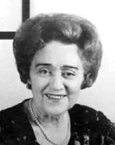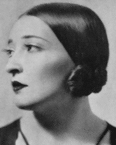A new year deserves a new newsletter, and happily, there are glad tidings to report.
- Most gratifying is the release on Roméo Records of a 2-CD set of Nadia Reisenberg’s solo and chamber pieces, all of them taken from live, unedited performances, none of them previously available in any form. From faculty concerts at the Mannes College of Music, there’s Weber’s “Grand Duo” with the great clarinetist David Glazer; Mozart and Beethoven Trios with Glazer and equally revered cellist David Soyer (then on leave from the Guarneri Quartet); Beethoven with three members of the Budapest Quartet; and with the full Galimir foursome, the sparkling Dvorak Quintet.
In the old LP days, that would have overfilled two discs, but CDs are more accepting, so I was also able to add a number of solo pieces dating from (more or less) 1951. Mother (i.e. Nadia) had retired from solo recitals by then – her last one, at Carnegie Hall four years earlier, is also available in CD form on the Roméo label) – when an offer arrived she couldn’t refuse: to be guest soloist at my final Town Hall concert as a member of the N.Y.U. Glee Club. Accordingly, she pulled out a number of pieces that had served her well going back to her first American concerts, and sat down at the piano to read through them. Don’t recall whether it was her idea or mine, but I schlepped out our old Soundmirror recording machine, set up the microphone on the living room floor, and taped her reading through those old favorites. Retired from recitals or not, Mother played Mozart’s Pastoral Variations, a delicious Glazunov Waltz, some Chopin, and the Spanish Rhapsody of Liszt with her trademark warmth, natural phrasing and deep musical understanding. Her beauty of tone, to a certain extent, will have to be taken on faith here. There’s just so much a Brush Soundmirror, especially in the bumbling hands of its novice engineer, could capture.
Still, what a radiant exemplar of music making at its highest level is here on display! What’s next? It’s a bit early to promise, but if all goes well, Roméo will reissue another two-CD set before the end of the year, with newly re-mastered editions of Mother’s acclaimed Westminster LPs of Haydn Sonatas and Variations.
- Just as I was about to say that reviews of the new chamber/solo album hadn’t come in yet, a glowing commentary arrived from the internet magazine Audiophile Audition. “These concerts receive a new and often vivid presence,” writes Gary Lemco, “a marvelous addendum to the Reisenberg recorded legacy which, for my money, has always warranted expansion.” Mr. Lemco goes on to shower praise on Mother’s “delicate clarity and aristocratic grace” (in the Mozart Variations); refers to her “virtuosic trills and dancing allegretto” (Beethoven Trio); intensity and fluency of execution” (Dvorak Quintet); and adds that (in Liszt’s Spanish Rhapsody) “Reisenberg climbs this Matterhorn with one deep breath of oxygen.” The long article concludes with thanks – with which I concur heartily – to Ron Mannarino, director of Roméo Records, “for his commitment to these Reisenberg restoration projects, thus giving us a pianist whose stylistic universality will now remain available to generations of musically-inquiring minds and hearts.” This goal, of course, was our primary thrust in establishing the
Nadia Reisenberg / Clara Rockmore Foundation in the first place, and why it’s so gratifying to encounter expert critical acclaim for this and all of the earlier CD releases. - Another new album includes the Third Beethoven and First Brahms Sonatas that Mother played with the eminent cellist Leonard Rose. I can’t claim credit for those CDs, except perhaps to note that they were pirated from one of my Listening Room broadcasts on WQXR. The series went on the air in January of 1970, and for our third anniversary, I invited Leonard and NR, who long since had formed a mutual admiration society, to throw us a live sonata party. Let me pick up the thread from Lynn René Bayley’s internet column “The Art Music Lounge”:
Like his equally great colleague, Nadia Reisenberg, he (Leonard Rose) subjugated his outstanding talent to a life of teaching in America and playing chamber music. As for the Beethoven and Brahms Sonatas, all I can say is that I wish the Beethoven set was complete, particularly if Reisenberg were the pianist. In the Brahms First and Beethoven Third Sonatas, this duo strikes sparks with rhythmically acute and emotionally intense playing, taking these sonatas to an entirely new level. These performances were fairly late in both artists’ performing careers; except for a few rare outings with violinist Erick Friedman or her sister and theremin player Clara Rockmore, Reisenberg spent most of her late years teaching, and Rose himself was also pretty much tied up at Juilliard. The Beethoven Sonata No. 5 finds Eugene Istomin in an unusually feisty mood, playing with more incisiveness than I remembered from the Stern trio recordings, but the overall effect of the piano part is choppier and less organic than the performances by Reisenberg. Just compare the last movements of Sonatas Nos. 5 (Istomin) and 3 (Reisenberg) for a very clear example of what I mean. Both play with rhythmic verve, but Reisenberg’s accompaniment is so much more varied in terms of touch and subtle moments of rubato. Sort of like comparing a very good pupil to his or her master teacher. There’s a moment at about 4:30 in the last movement of No. 5 where Rose and Reisenberg practically “roll uphill” together on the music—a simply astonishing moment that must be heard to be believed.
How wonderful that, pirated or not, such memorable playing does indeed live on. The two CD set, by the way, is out on the DoReMi label, simply titled “Leonard Rose”; the link to Lynn Bailey’s complete review is:
http://artmusiclounge.wordpress.com/2016/11/17/the-great-leonard-rose-rises-to-the-occasion
- Ongoing ripples from the magic of Clara Rockmore’s unique virtuosity continue to expand public awareness and appreciation of the theremin. Her photos and possibly other artifacts will be part of the permanent exhibition at the newly redesigned Canada Science and Technology Museum in Ottawa. The display of electronic instruments is still under development, but the plan is for it to be on the museum floor for at least five years, possibly longer.
- Among other usage requests, Laura Van Bloh, a film maker in Berlin, has asked to use CR and NR’s recording of St. Saëns’ “The Swan,” while the same performance may appear in a documentary about the Brazilian social scientist and intellectual Helio Jaguaribe. More surprisingly, perhaps, Clara and Nadia’s recording of Dvorak’s “Humoreske” has been tapped for a French dating site commercial.
- Sergei Iterin, who helped organize a Clara Rockmore Centennial Concert and Exhibition in New York six years ago, is now devising a similar event at the Jewish Library in her (and NR’s) home town of Vilna (now Vilnius), the goal being “to improve memory of her heritage.” Also from Vilnius comes word that Goda Railbyte, a journalist at Lithuanian National Radio and Television is preparing an article about Clara and the theremin.
- Two other major exhibitions are ongoing: at Madrid’s Fundación Telefónica, a profile of Leon Theremin features several photos of Clara and Theremin, including one taken at their 1991 reunion in New York by my son, Steve J. Sherman. That display continues through April, while the featured presentation at the Museum of Musical Instruments in Phoenix (AZ) has been renewed through 2019. As Rich Walter, MIM’s Curator for USA and Canada, wrote us:
“We are grateful for the continued display of Clara Rockmore’s historic RCA theremin and speaker in our Artist Gallery. Perhaps more importantly, Clara Rockmore continues to be one of the signature individuals we highlight for our museum guests, and the story of her theremin continues to be integral to many people’s experiences here. Other exhibits periodically change, but there are no adequate or parallel ‘substitutions’ to explain a wholly unique instrument and playing technique, so we rely on Clara Rockmore to personalize a (still!) radical concept of music making, and it is thrilling to know we have her actual instrument.”
- And thrilling indeed is an apt word to describe news that the noted composer Dalit Warshaw is working on a Theremin Concerto. One of Clara’s earliest works (at age 8) was “Fun Going to Miss Reisenberg,” and Clara bequeathed to Dalit her performance theremin (especially built to her specifications by Leon Theremin). “I think it will be quite a piece,” Dalit says,” a classical concerto (that) presents the theremin in the style and manner of lyricism intended for it by Termen* and by Clara. The first of its three movements, entitled ‘Clara’s Violin,’ gives a musical narration of aspects of her story, and her introduction to the theremin.” Can’t wait!
* In America, the inventor anglicized his name to Leon Theremin; in Russia he was known as Lev Termen.


